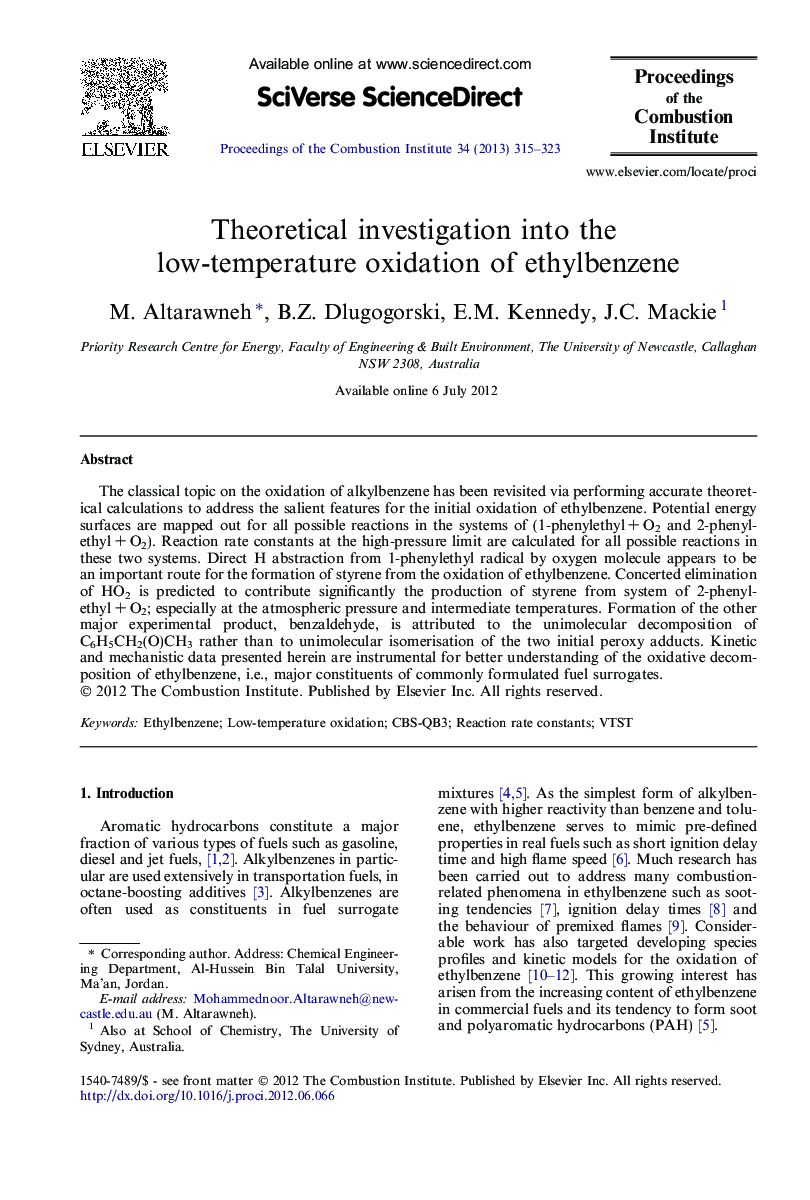| Article ID | Journal | Published Year | Pages | File Type |
|---|---|---|---|---|
| 241130 | Proceedings of the Combustion Institute | 2013 | 9 Pages |
The classical topic on the oxidation of alkylbenzene has been revisited via performing accurate theoretical calculations to address the salient features for the initial oxidation of ethylbenzene. Potential energy surfaces are mapped out for all possible reactions in the systems of (1-phenylethyl + O2 and 2-phenylethyl + O2). Reaction rate constants at the high-pressure limit are calculated for all possible reactions in these two systems. Direct H abstraction from 1-phenylethyl radical by oxygen molecule appears to be an important route for the formation of styrene from the oxidation of ethylbenzene. Concerted elimination of HO2 is predicted to contribute significantly the production of styrene from system of 2-phenylethyl + O2; especially at the atmospheric pressure and intermediate temperatures. Formation of the other major experimental product, benzaldehyde, is attributed to the unimolecular decomposition of C6H5CH2(O)CH3 rather than to unimolecular isomerisation of the two initial peroxy adducts. Kinetic and mechanistic data presented herein are instrumental for better understanding of the oxidative decomposition of ethylbenzene, i.e., major constituents of commonly formulated fuel surrogates.
